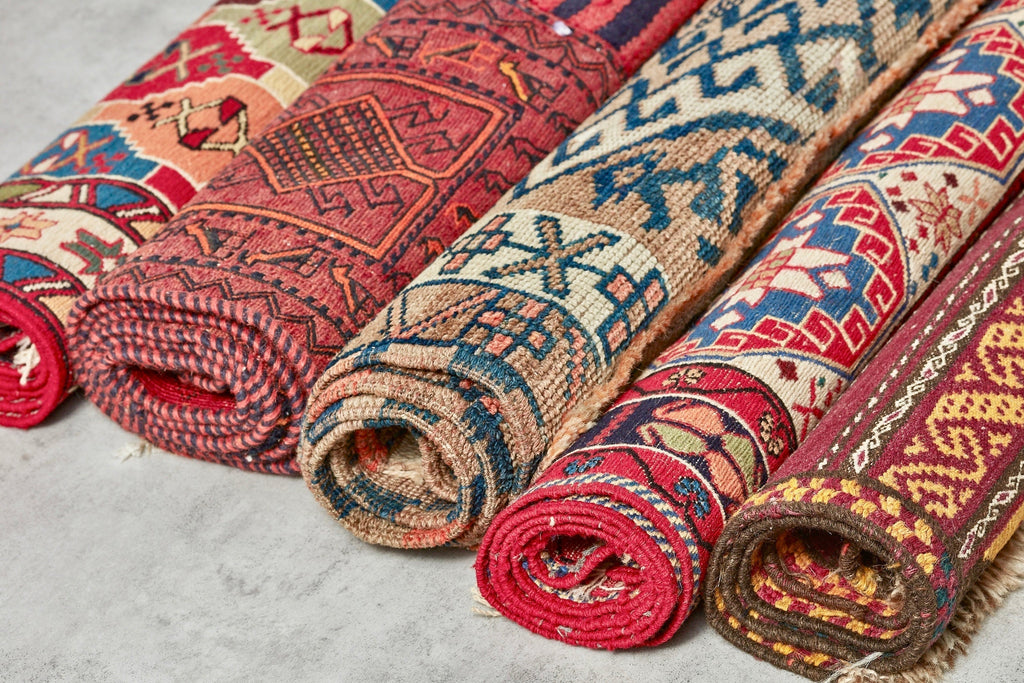Turkish kilims aren’t just beautiful floor coverings — they’re living stories, woven by hand and rich with meaning. Each shape and symbol holds cultural significance, often passed down through generations of weavers.
Let’s take a look at some of the most common symbols you might find in vintage Turkish kilims and what they represent:
1. The Elibelinde ("Hands on Hips")
This is one of the most recognisable motifs — a stylised female figure with hands on her hips. It represents fertility, motherhood, and the power of women. In tribal communities, this symbol was often woven into dowry pieces or wedding textiles as a blessing for a strong family.

2. The Ram’s Horn
A symbol of masculinity, strength, and heroism, the ram’s horn is often used to convey protection and endurance. When paired with the Elibelinde, the two together can symbolise a balanced marriage or harmonious union.

3. The Eye / Evil Eye Protection (Nazar)
The eye motif is everywhere in Turkish design. It’s believed to ward off evil and bring protection to the home and its people. Woven in bold, geometric forms, the eye motif is a spiritual shield woven into daily life.

4. The Star / Cross Motif
Stars often symbolise happiness or good luck. In some kilims, the star appears as a simple cross shape with arms of equal length, representing harmony and balance.

5. The Running Water or Zigzag
Water is life. In kilims, the zigzag patterns often represent flowing rivers or rain — symbols of abundance, sustenance, and movement. They're also believed to protect from evil, since spirits were thought to be unable to follow straight lines.

6. The Comb
Not always obvious at first glance, comb-like motifs symbolise cleanliness, order, and even marriage. Some say it also has a protective aspect, related to family life and home blessings.

7. Wolfsmaul - Kurt Agizi
This symbol stands for protection from wild animals and evil forces. It reminds us of the connection between humans and nature. The wolf is considered a strong animal that stands for courage, strength and the ability to survive.

8. Tree of Life - Hayat Ağacı:
One of the central symbols in Anatolian kilims. The tree connects heaven, earth and the underworld and stands for life, growth and immortality. The tree of life represents the unity of all living things and the cycles of life, including birth, growth, death and rebirth

Why It Matters
The symbols on Anatolian kilims are much more than decorative patterns. They are living expressions of tradition, faith and history that are still relevant today. In a globalised and rapidly changing world, these symbols remind us of the timeless values of love, protection, fertility, community and hope.
By purchasing a kilim, you are not only securing a unique piece of craftsmanship, but also a piece of cultural history. These rugs combine tradition with timeless elegance and bring warmth and personality to your home.
Visit our shop and discover the variety of Anatolian kilims – each piece is unique, each pattern a story.

